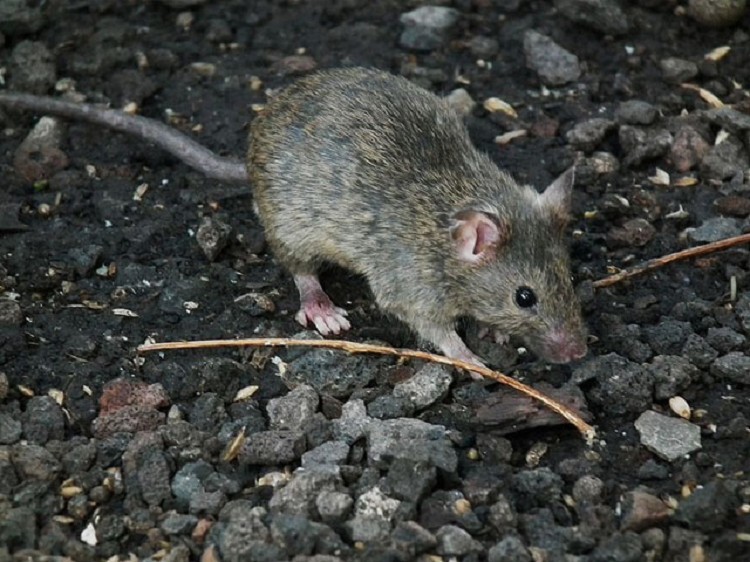House Mouse, Mus musculus
The House Mouse, which is probably the most well-known rodent, is found state-wide in Tennessee.
Description: A small rodent with an elongated snout, protruding, black eyes, large ears, and a scaly tail that is mostly hairless and about one-half the body length. Their short fur is grayish-brown on the back and is slightly lighter on the belly. The tail is slightly darker above and lighter below.
Length: 5.0 - 8.1 inches
Tail: 2.4 - 4.0 inches
Ears: 0 .4 - 0.8 inches
Weight: 0.5 - 1.0 ounces
Similar Species: All 3 deermice have a sharp contrast between their white under parts and their upper fur color.
•Meadow Jumping Mouse has a much longer tail, longer hind feet, and yellowish sides.
•Eastern Harvest Mouse usually has a dark stripe down the center of the back, but can only be separated positively by analysis of dental formulas.
Habitat: The House Mouse occurs in a variety of habitats, but is usually found among houses, barns, and buildings. They can also be found in old fields, grain fields, fencerows, weedy roadsides, and woodlots.
Diet: Omnivorous, but prefers grains, seeds, leaves, stems, and roots. They also eat insects, human food, and carrion.
Breeding information: House Mice can breed throughout the year, but they mostly produce young from spring through fall. Females are pregnant 19-21 days before delivering 2-13 (usually 5-7) young. They are very prolific and may produce as many as 14 litters per year, although 5-10 litters is normal. The young develop fur by 10 days old and are weaned by 3 weeks.
Status in Tennessee: The House Mouse needs no protection as it is quite common. They can also produce a considerable amount of damage to property and foods.
Fun Facts:
•House Mice can pass through openings as small as ½ inch in diameter.
•They are highly migratory, especially if environmental conditions become unfavorable.
Best places to see in Tennessee: Houses, sheds, or farm buildings.
